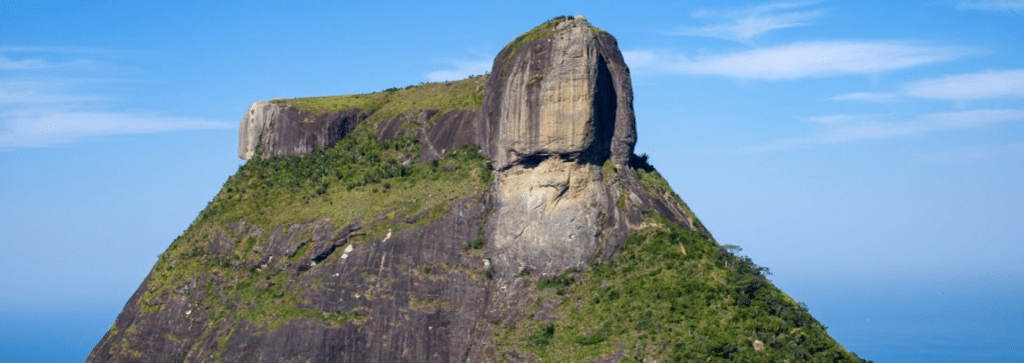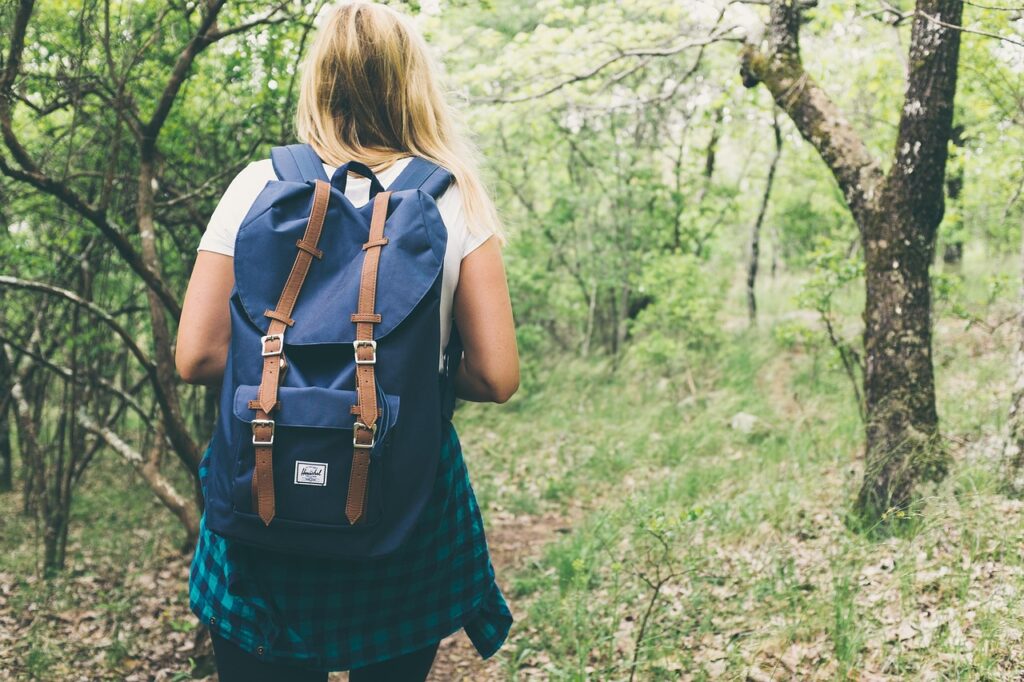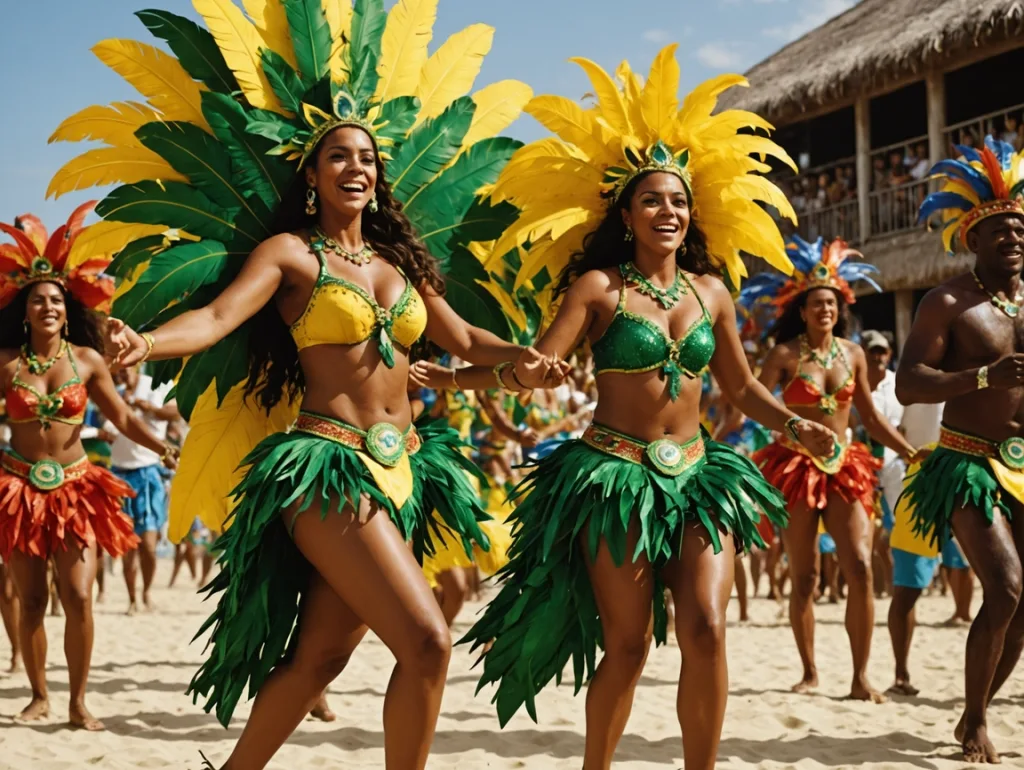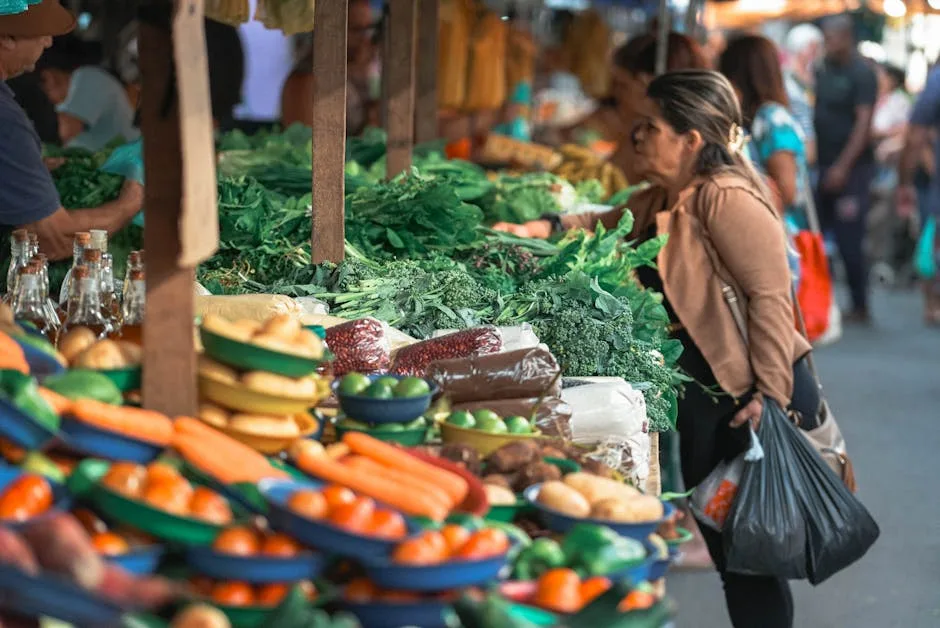Rio de Janeiro is renowned not only for its vibrant culture and stunning urban landscapes but also for its incredible natural beauty, which offers a wide range of hiking opportunities. Nestled between the mountains and the Atlantic Ocean, the city boasts a diverse terrain that captivates both locals and tourists. Hiking in Rio has become an essential part of the city’s recreational activities, providing a unique way to experience the lush greenery, scenic vistas, and rugged mountains that define the region.
The city features numerous hiking trails that cater to various skill levels and preferences. From coastal paths with breathtaking views of the ocean to challenging trails that lead to majestic mountain peaks, hikers can explore the rich diversity of Rio’s environments. Popular hiking spots like the iconic Pedra da Gávea and the picturesque Dois Irmãos offer thrilling adventures, while the tranquil trails in Tijuca National Park invite nature lovers to immerse themselves in lush biodiversity.

Moreover, hiking in Rio de Janeiro is not only about enjoying nature; it also serves as a social activity that fosters community connections. It brings together people from different backgrounds, encouraging both locals and tourists to share their experiences and enjoy the camaraderie of fellow outdoor enthusiasts. The trails often become gathering spots for those who seek to appreciate the stunning landscape, engage in physical activity, and promote environmental awareness.
As we delve deeper into the best hikes that Rio de Janeiro has to offer, it is essential to recognize the importance of this activity in enriching the city’s outdoor lifestyle. The combination of local culture, stunning views, and the thrill of exploration makes hiking an unparalleled experience, laying the groundwork for an unforgettable adventure throughout this captivating destination.
Top Hiking Trails in Rio de Janeiro
Rio de Janeiro is renowned for its breathtaking landscapes, and its hiking trails offer an exceptional way to explore the region’s natural beauty. Among the most popular routes is the acclaimed Pão de Açúcar (Sugarloaf Mountain) trail. This iconic hike spans approximately 1,500 meters and is characterized by its moderate difficulty level. Hikers are rewarded with stunning panoramic views of the city and the surrounding sea as they ascend. The trail features a well-maintained path, with several viewpoints that highlight the striking scenery unique to Rio.
Another remarkable route is the Corcovado trail, which leads to the majestic Christ the Redeemer statue. This trail is about 3 kilometers long and offers a more challenging hiking experience, making it suitable for those with a higher fitness level. Along the way, hikers will encounter lush forests, vibrant flora, and an array of wildlife. Upon reaching the summit, visitors are treated to one of the most iconic vistas in the world, overlooking Rio and the Atlantic Ocean.
For those seeking a less crowded experience, the Pico da Tijuca trail presents a fantastic option. This hike covers a distance of 3.5 kilometers and is rated as moderate. As the highest peak in the Tijuca National Park, it offers a diverse range of landscapes, including dense rainforest and rocky outcrops. The trail provides a glimpse into the park’s rich biodiversity, making it a perfect choice for nature enthusiasts.

Lastly, the Caminho dos Picos trail is another excellent choice for experienced hikers, stretching around 10 kilometers through the rugged terrain of the Serra da Carioca mountain range. It presents a more strenuous challenge yet offers a wild and untamed natural ambiance. This trail is tailor-made for adventure seekers looking to immerse themselves in Rio’s unique ecosystem.
Each of these trails offers its unique features, atmospheres, and challenges, ensuring that hikers of varied skill levels can find a suitable adventure in Rio de Janeiro.
What to Pack for a Hike in Rio
When preparing for a hiking adventure in Rio de Janeiro, it is crucial to pack appropriately in order to enhance your experience and ensure safety on the trails. Given the diverse landscape and tropical climate of Rio, specific items are essential for any hiker to carry. First and foremost, investing in a pair of suitable hiking shoes or boots is vital. These should provide good ankle support, traction, and be comfortable enough for extended wear, as uneven terrain can be challenging. Additionally, breathable socks made of moisture-wicking materials can help prevent blisters and ensure comfort.
Hydration is another critical factor to consider during a hike. Carrying a reliable water bottle or hydration bladder is recommended, as staying hydrated prevents fatigue and heat-related illnesses. Depending on the length of your hike, you may require additional water, so plan accordingly. Along with hydration, packing lightweight, energy-rich snacks is important to maintain energy levels. Trail mix, energy bars, and dried fruits are excellent choices that are easy to carry and provide necessary nutrients.
Given the potential for fluctuating weather conditions in Rio, dressing in layers is advisable. A moisture-wicking base layer can help manage sweat, while a light, breathable long-sleeve shirt offers sun protection. A waterproof jacket should be included to shield against unexpected rain, which is common in tropical regions. Additionally, wearing a wide-brimmed hat and polarized sunglasses can offer added protection from the sun.
Safety gear is paramount during your hike. A compact first aid kit should contain essential items such as band-aids, antiseptic wipes, and pain relievers. Moreover, a basic navigation tool, such as a map or GPS device, can help prevent you from getting lost. Finally, don’t forget to carry a trash bag to ensure you leave no trace, protecting the natural beauty of Rio de Janeiro for future hikers.
Navigating Safety and Regulations
Hiking in Rio de Janeiro offers stunning views and an opportunity to connect with nature; however, safety should always be a paramount concern for hikers. Understanding the terrain, potential hazards, and recommended regulations can greatly enhance the hiking experience. One of the foremost safety tips includes hiking in groups, as this not only provides companionship but also an added layer of security. Solo hikers may encounter unexpected situations, making it important to always inform a friend or family member about your intended route and estimated return time.
It is crucial to familiarize oneself with the local regulations and guidelines before embarking on a hike. Many parks in Rio have established rules regarding trail usage, hours of operation, and permitted activities. Adhering to these regulations not only ensures personal safety but also protects the delicate ecosystems within these natural areas. Additionally, it is advisable to carry basic safety equipment such as first-aid kits, sufficient water, and snacks to prepare for any unpredicted changes.
Wildlife encounters are also a reality to consider while hiking. Rio’s diverse ecosystem is home to various species, some of which may pose risks to inexperienced hikers. It is essential to respect local wildlife by observing from a distance and not feeding them. Furthermore, hikers should be aware of environmental laws such as prohibitions against littering and damaging vegetation, which promote sustainable practices in these pristine areas.
Engaging in responsible hiking practices not only enhances personal safety but also fosters a spirit of environmental stewardship. By staying informed about the best safety measures and respecting local wildlife and regulations, hikers can fully enjoy Rio de Janeiro’s breathtaking landscapes while ensuring their adventures remain safe and responsible.
Stunning Scenic Views and Photo Opportunities
Hiking in Rio de Janeiro offers not only the exhilaration of physical activity but also a chance to experience some of the most breathtaking vistas on Earth. The diverse terrain invites nature enthusiasts to explore its numerous trails, each revealing spectacular landscapes that are perfect for photography. From lush mountains to picturesque coastlines, the views along these paths are simply mesmerizing.
Among the most renowned lookout points is the summit of Pedra Bonita, which provides an expansive view of the surrounding forests and the striking coastline. Photographers will find that the golden hour, just before sunset, offers the best lighting conditions to capture the vivid colors of the sky and the rich greens of the foliage. Similarly, the trail leading to the famous Sugarloaf Mountain rewards hikers with panoramic views of Guanabara Bay, especially stunning during dusk when the twinkling city lights begin to dot the horizon.
Another exceptional spot is the Vista Chinesa located in Parque Nacional da Tijuca. This unique viewpoint captures the essence of Rio with its combination of traditional Chinese architecture framed by natural beauty. Early morning is typically the best time for photos here, as the sunlight bathes the landscape in a soft glow, allowing for vibrant photographs that convey the serene ambiance of the park.
For those who venture out to the Tijuca Rainforest, lookout points such as the Mirante do Primata offer breathtaking views of both mountains and forests. This vista showcases the rich biodiversity of the area and is particularly captivating during clear days when the distance is visually unencumbered. To maximize your photography opportunities, plan your hike according to seasonal changes, as the landscape can drastically alter, impacting the colors and moods captured in your images.
In conclusion, Rio de Janeiro’s hiking trails serve as a gateway to nature’s splendor, marked by breathtaking views and countless photo opportunities. By planning your hikes around specific times of day and seasons, you can ensure that each moment spent hiking is documented with remarkable imagery that reflects the beauty of this remarkable location.
Cultural Insights Along the Trails
Hiking in Rio de Janeiro provides more than just stunning views; it immerses adventurers in a rich tapestry of cultural heritage. Many trails wind through areas that boast historical landmarks, each telling a unique story of the region’s past. For instance, the trail leading to the iconic Pedra Bonita offers breathtaking vistas and a glimpse into the history of Brazil’s indigenous peoples, who once thrived in the same lush landscapes. Understanding these historical contexts enhances the hiking experience, allowing individuals to appreciate the natural beauty and cultural significance of their surroundings.
Local flora and fauna also play an essential role in the cultural landscape of Rio’s hikes. The Brazilian Atlantic Forest, home to a diverse range of species, serves as a vital resource for many local communities. Many plants found along the trails are not only significant from an ecological perspective but are also intertwined with the traditions and practices of indigenous populations. Hikers who take the time to learn about these plants can gain insight into their uses in traditional medicine, food, and rituals, thereby fostering a deeper connection with the land.
Moreover, certain trails are regarded as sacred by local and indigenous communities. For instance, the trail to the summit of Corcovado, where the Christ the Redeemer statue stands, holds immense significance for both spiritual and cultural reasons. Engaging with the cultural narratives surrounding these trails encourages hikers to reflect on their interactions with nature and to consider the importance of stewardship and respect for the environment. By embracing the cultural aspects of hiking in Rio, trekkers may develop a more profound appreciation for the trails they explore, enriching their overall outdoor experience.
Community and Social Hiking Events
Rio de Janeiro boasts a vibrant hiking community that combines the love for nature with social interaction. Local hiking clubs and groups play a pivotal role in fostering this enthusiasm, offering opportunities for individuals of all skill levels to explore the region’s breathtaking landscapes together. These organizations often coordinate group hikes that not only help participants discover the trails but also build camaraderie among hikers who share a common passion.
One of the most well-regarded clubs in the area is the “Caminho Livre,” which organizes numerous group events throughout the year. This club promotes inclusivity by ensuring that everyone, from beginners to experienced trekkers, can participate. They regularly update their calendar with a variety of hiking adventures, ranging from leisure walks to more challenging trails, ensuring there’s something for everyone. Additionally, these group hikes are accompanied by knowledgeable guides who provide safety tips and information about the flora and fauna, enhancing the overall experience.
Beyond organized clubs, several social events focusing on hiking are held in Rio, such as “Hiking Meetups,” which are designed to bring hikers together in a casual setting. These gatherings often include discussions about favorite trails, gear recommendations, and future trip planning. Social media platforms also play an essential role in connecting hikers. Groups on platforms such as Facebook and WhatsApp allow enthusiasts to share experiences, seek advice, and arrange spontaneous hikes with like-minded individuals.
Furthermore, community engagement initiatives like volunteering for trail maintenance or conservation events offer a rewarding way for hikers to give back to the environment they cherish. By participating in these activities, hikers not only help preserve Rio de Janeiro’s stunning natural beauty but also form lasting bonds within the community.
Seasonal Hikes: Best Times to Visit
When considering hiking in Rio de Janeiro, understanding the seasonal variations can significantly enhance the experience. The climate in this vibrant city influences trail accessibility and overall hiking conditions. Rio’s subtropical climate features two primary seasons: a warm, humid summer and a mild, dry winter. Each season presents unique opportunities for hikers to explore the stunning landscapes, from mountains to lush rainforests.
Summer, which typically lasts from December to February, can be characterized by high temperatures and humidity. This season can make for invigorating hikes but also requires careful planning to avoid the peak afternoon heat. Early morning or late afternoon hikes are recommended during these months. Additionally, summer corresponds with vibrant local events, including Carnival, offering hikers an infusion of cultural experiences alongside their outdoor adventures.
The autumn months, from March to May, provide a transitional period where temperatures begin to drop, and humidity becomes more manageable. This time of year is often considered ideal for hiking, as the trails are less crowded, and the weather is generally pleasant. The autumn foliage can add a beautiful visual element to hikes, making it a great period for photography and enjoying the natural scenery.
Winter, spanning from June to August, sees the most comfortable temperatures for outdoor activities, making it the most favorable time for serious hikers. Although it is drier, occasional rainfall can enhance the experience by bringing out the vibrant colors of the jungle. Skies are often clear, providing breathtaking views from summit trails. Finally, spring, occurring from September to November, sees a resurgence of flora and fauna, making for picturesque surroundings and an ideal time for wildflower enthusiasts.
Ultimately, the best time for hiking in Rio de Janeiro hinges on personal preferences and desired experiences. Whether one seeks the thrill of summer festivities or the tranquility of winter escapades, each season offers a unique opportunity to embrace nature’s beauty in this breathtaking region.
Embrace the Adventure
As we have explored throughout this blog post, Rio de Janeiro boasts an array of breathtaking hikes that provide not only mesmerizing views but also opportunities for personal growth and connection with nature. From the iconic trails of the Tijuca National Park to the scenic vistas of Pedra Bonita and Pedra da Gávea, each hiking experience offers unique elements that make the adventure worthwhile. The diverse landscapes showcase the natural beauty that Rio de Janeiro is renowned for, serving as a reminder of the importance of maintaining a strong connection to the environment.
Engaging in outdoor activities like hiking can greatly contribute to our physical well-being. The heart-healthy exercise of traversing hills and rugged terrains promotes cardiovascular fitness, while also fostering mental clarity and emotional resilience. Nature has a profound effect on our mental state; the tranquility experienced amidst lush greenery and majestic mountains allows for valuable introspection and rejuvenation. Thus, encouraging readers to embrace these hiking opportunities in Rio de Janeiro is essential for holistic health.
Furthermore, the vast ecosystems found within the trails highlight the significance of environmental conservation, reminding us of our role in protecting and preserving these natural wonders for future generations. Thus, by venturing out and experiencing these specific hikes, individuals not only deepen their appreciation for nature but also foster a commitment to its sustainability. In summary, embarking on a hiking adventure in Rio de Janeiro is more than just a physical challenge; it serves as an invitation to embrace the beauty of the natural world while enriching one’s own life. So, don your hiking shoes and prepare for an unforgettable journey through Rio’s stunning landscapes.





